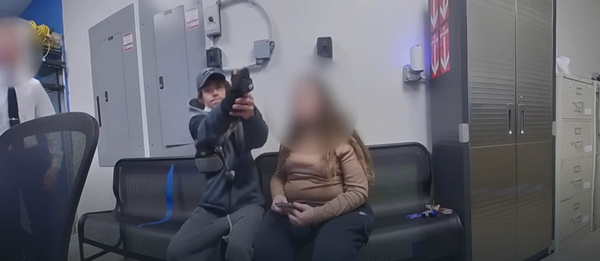
Something is enduring about pixel art that keeps drawing us back. A handful of coloured squares shouldn’t have much power, yet somehow they carry stories, emotions, whole worlds. Retro visuals were born from hardware limitations, but in 2025, they are less of a constraint and more of a deliberate artistic choice.
Numbers suggest this isn’t just nostalgia at work. While the global games market fluctuates, interest in pixel art and retro-inspired titles continues to grow. According to Cognitive Market Research, the pixel‑game games market is projected to expand at around 11.5% (CAGR) between 2024 and 2031. Indie titles, many leaning into 2D or pixel aesthetics, continue to be key drivers of engagement and discovery, even as saturation makes standing out increasingly challenging.
What does this data crunching mean? It means more games embracing pixel art as a style and a popular choice. Titles like Stardew Valley, Hades, and Celeste have not only caught players' imaginations but also achieved impressive sales figures. Stardew Valley, for instance, has sold over 41 million copies, underscoring the enduring appeal of pixel-based games.
Pixel art is no longer just a cute callback or a nostalgia hook; it’s a visual language. The limited palette, tight sprites, and minimal animation force clarity and precision. Every choice counts, whether it's character and world design or gameplay and narrative, and that constraint often sparks innovation.

Retro as a design choice, not just nostalgia
Retro visuals today are more than a throwback; they’re a design philosophy. Developers are blending pixel art with modern techniques like layered backgrounds, dynamic lighting, parallax, and subtle shader effects. The result? Games that feel retro but play modern, giving players nostalgia wrapped in a fresh experience.
I tried embracing the art style myself with PICO-8, a 'fantasy console' system that includes a game maker and platform distribution. No-code game engines and apps are growing in popularity, appealing to artists and designers who want to make games but don't have the coding background to make it happen.
But the pros make it look so good and so easy. The likes of Shinobi: Art of Vengeance and The Drifter have already stolen my time, and here are some more excellent pixel art games coming in 2025.
- Marvel Cosmic Invasion is a beat ’em up that combines classic pixel sprites with fluid animation and richly layered backgrounds.
- Mina the Hollower from Yacht Club Games is a top-down adventure with charming pixel sprites, fluid animation, and moody lighting, blending nostalgia and modern design.
- Kingdoms of the Dump is Roach Games’ RPG featuring expressive characters and detailed environments, combining classic pixel aesthetics with imaginative world-building.
- Replaced is a retro-futuristic platformer where pixel art meets cinematic lighting, layered backgrounds, and atmospheric dystopian design.
- Neverway from Coldblood Inc. is a life-sim RPG that uses moody pixel visuals, bold color choices, and eerie design to evoke mystery and emotional tension.

Feel the warmth of pixels
These games prove that 2D isn’t a step backward. Pixel art and hand-drawn animation convey warmth and expressiveness in ways glossy 3D often cannot.
I remember playing the original Ninja Gaiden on NES, hammering away at that notorious difficulty curve. When Ninja Gaiden: Ragebound launched recently, it felt the same but different. The demonic difficulty of the NES is replaced by balance, the simplicity built upon with new combat and traversal depths. And the art? More detailed, expressive, and flamboyant.
Somehow, Ninja Gaiden feels fresher than the countless Unreal Engine remakes and 3D reboots we’ve seen recently. Pixel art and 2D hand-drawn games Hollow Knight: Silksong, Shinobi, and Momodora: Moonlit Farewell show how developers can tap nostalgia and deliver a thoroughly modern experience. And it's not just 2D, games such as Sunset Hills and Ruffy and the Riverside reveal nostalgia can work in 3D too.
And as you can see, the gaming nostalgia space is crowded. Not every pixel-art game hits those heights. Success depends on novelty, design, and smart positioning. Games like The Drifter may not match Stardew Valley’s scale, but they attract dedicated audiences and strong critical acclaim. It's why I keep heading back to Our Brilliant Ruin, just for the Art Nouveau inspiration. The lesson? Retro can work spectacularly, but it must be executed with intention.

Creative takeaways for artists and designers
For digital artists, game designers, and illustrators, the retro revival is more than nostalgia; it’s a training ground in discipline, clarity, and creative problem-solving. Below are some tools to explore that can help you get started:
- Aseprite is Ideal for animation and grid-based pixel work.
- Pro Motion NG is popular with pro studios for tilemaps and sprite sheets.
- Pixaki (iPad) Perfect for sketching on the go.
- Photoshop With 1px brushes and grid snapping, you can replicate classic sprite workflows.

Design tips
Start small, working with 16x16 or 32x32 tiles forces you to convey form, mood, and expression efficiently, training you to make every pixel count. Limit your palette, too; fewer colours not only spark creativity but also unify your visuals, giving them a cohesive, intentional feel.
When it comes to animation, less is often more: minimal frames can be surprisingly expressive, while over-rendered sequences risk diluting the impact of a character's design.
Embrace imperfection; a little jitter, colour clash, or slight distortion adds character and charm that perfect precision can’t replicate. You can also experiment with dynamic palettes, using subtle shifts in lighting or environmental colour to enrich your scene without compromising retro clarity.
And finally, don’t shy away from modern touches: gentle parallax effects, understated lighting, or soft shadows behind your pixel art can give depth and polish while keeping sprites crisp and readable.

The Lasting Appeal
Pixels never really went away; they just evolved. In 2025, they’re shaping the future of games and design. Retro aesthetics offer clarity, emotional resonance, and creative discipline. They remind us that less can be more.
Whether replaying a pixel-perfect revival, watching hand-drawn animation push boundaries, or seeing pixel-inflected indie hits attract new audiences, the retro art style shows that good game design isn’t about rendering fidelity, it’s about telling a story, evoking emotion, and making every pixel count.







